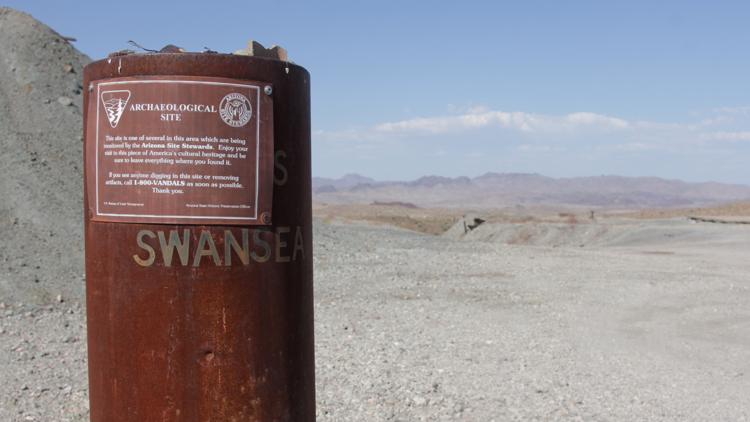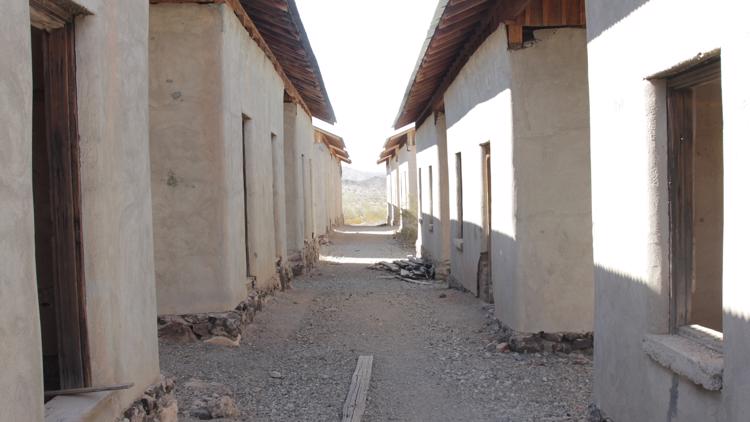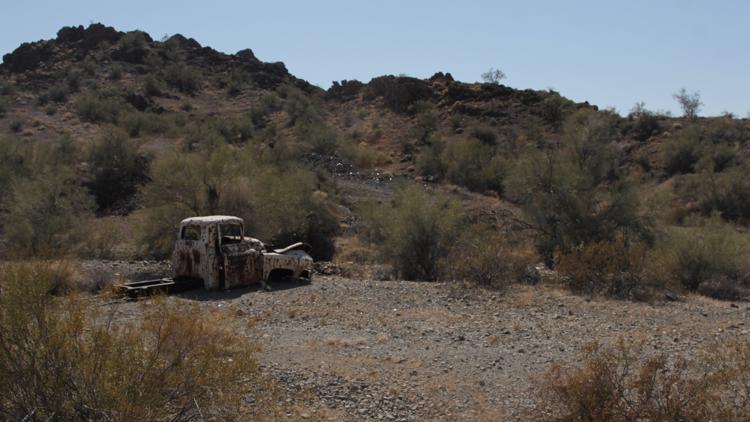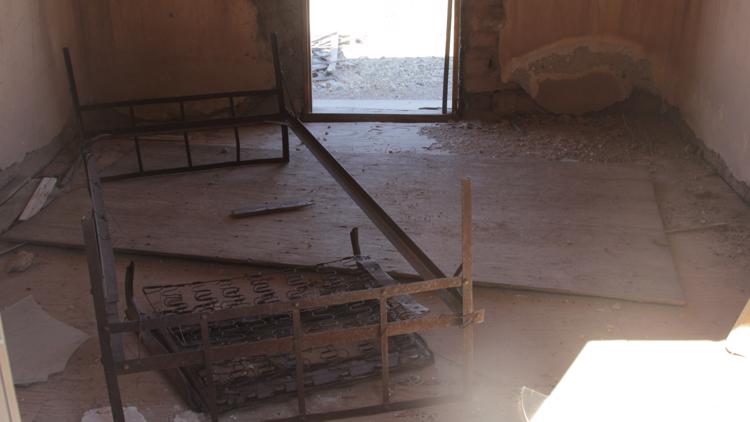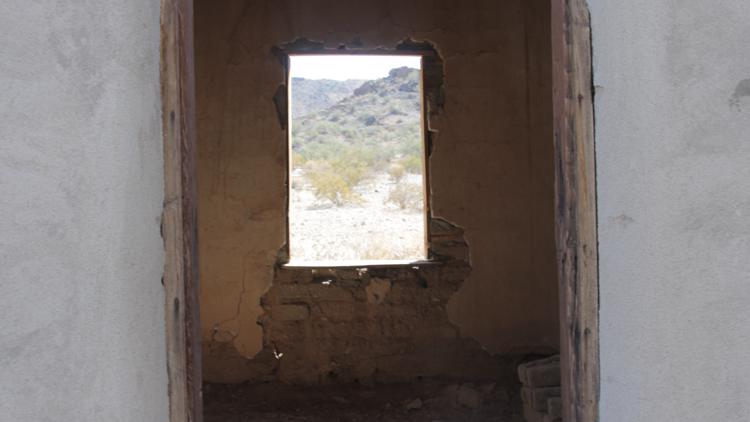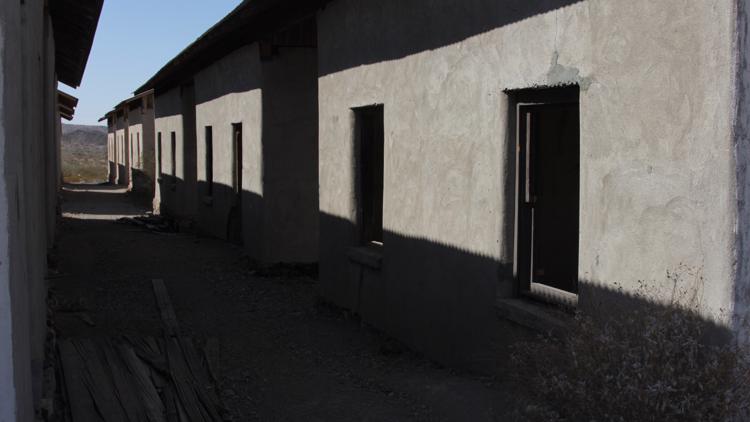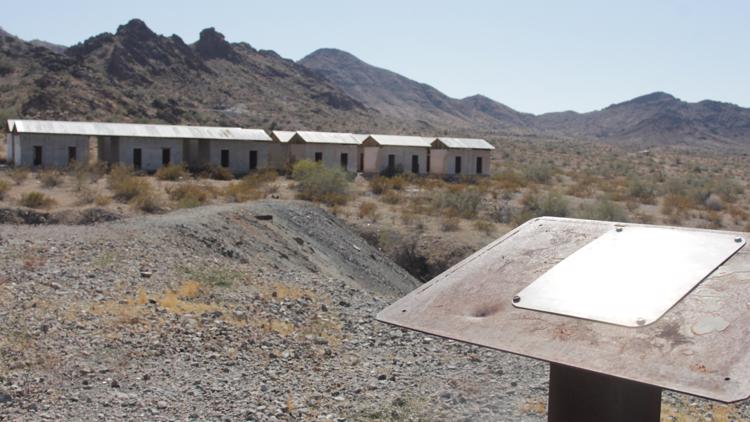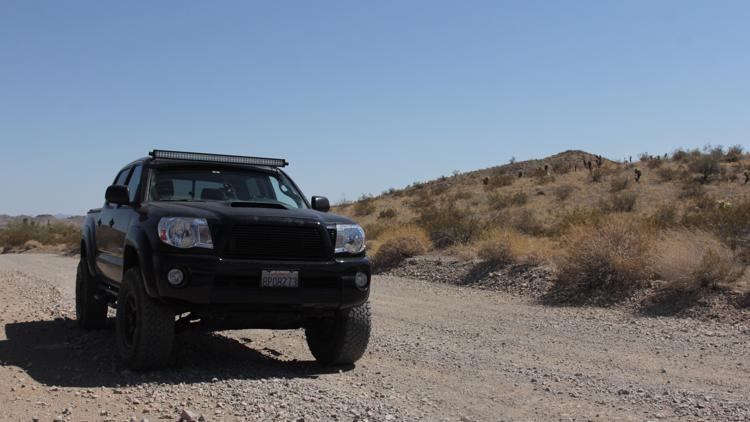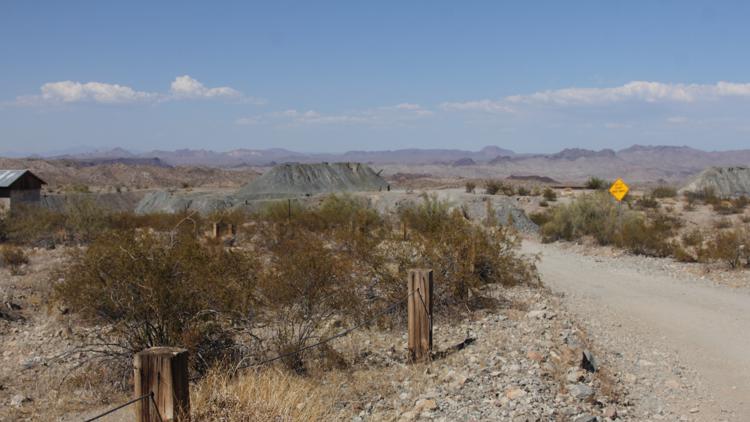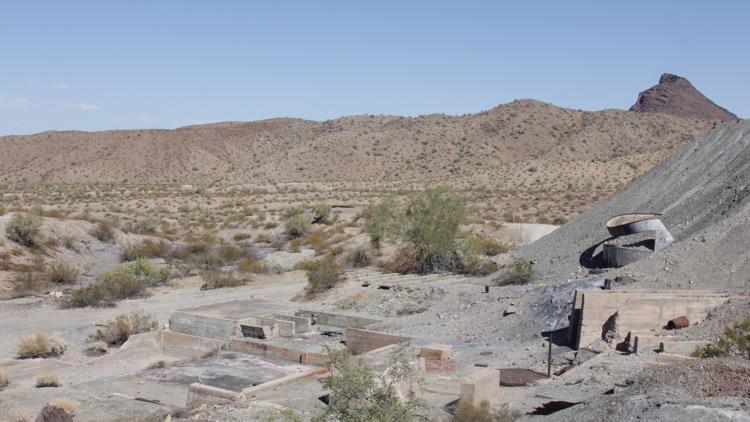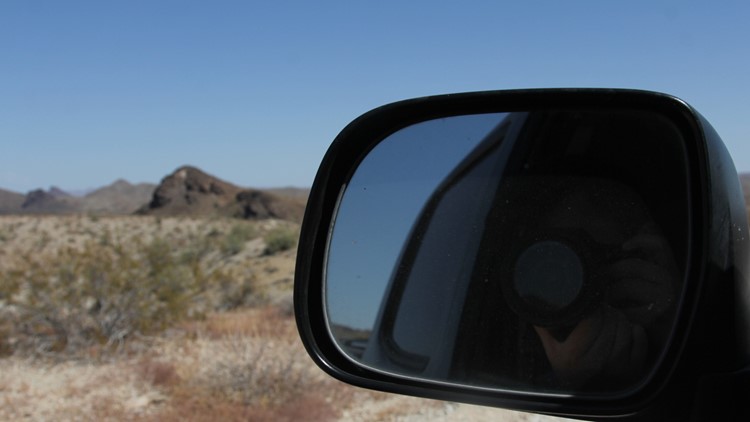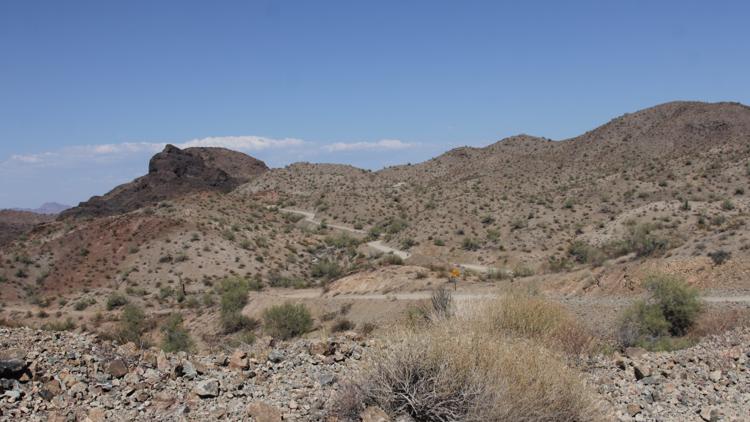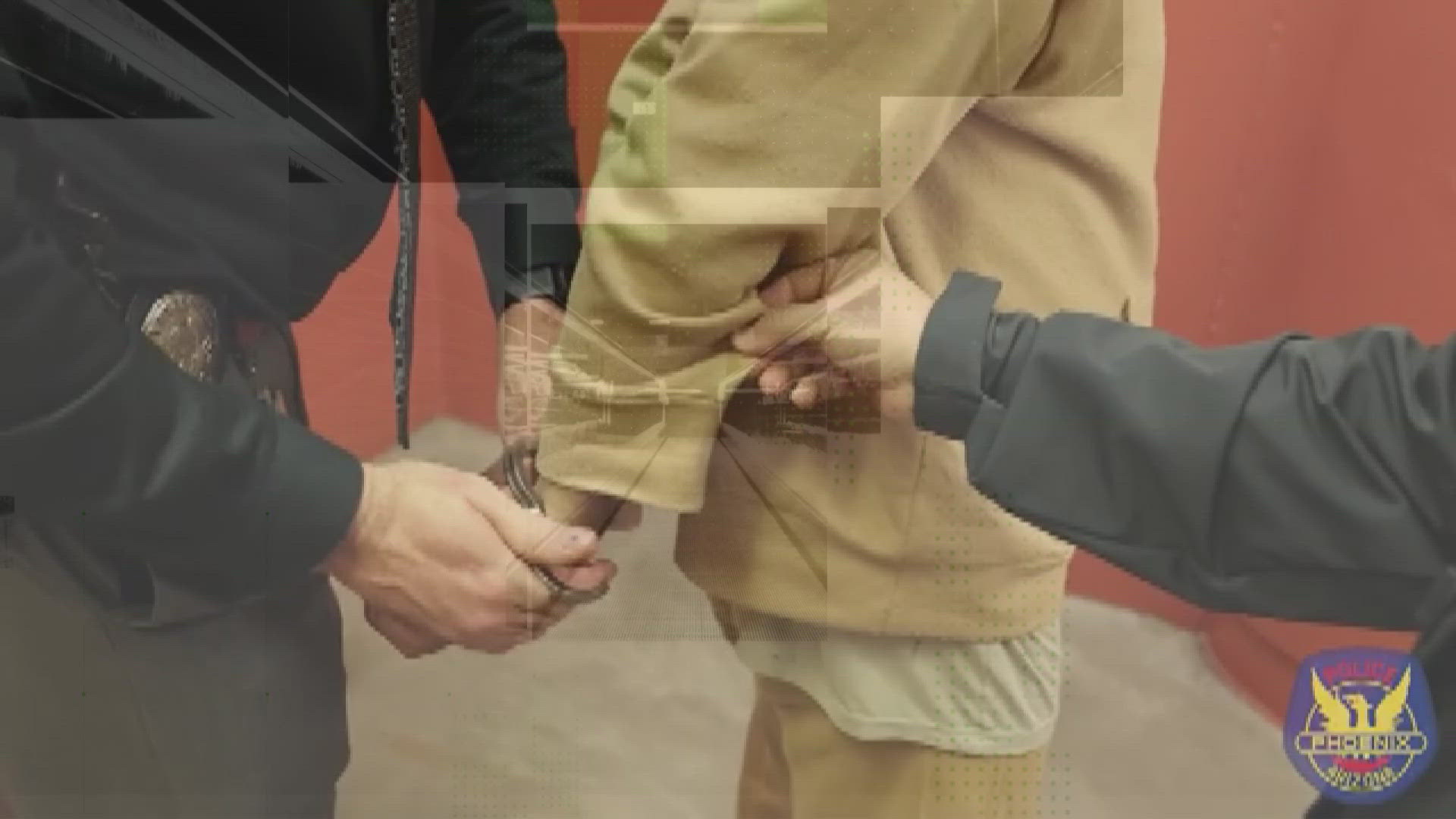PHOENIX — About two hours west of Phoenix, down winding roads carved through red rock and ivory sand is a piece of Arizona history standing frozen in time.
Swansea is just one of dozens of historic ghost towns dotted across the state, each with a unique story to tell.
The now-barren town was home to 500 people at its peak. Much of the copper used in Arizona’s rapid 20th-century industrialization came from its mines and helped bring life to neighboring cities.
The American Smelting and Refining Company took over in 1914 and kept its mines bustling until the Great Depression wrapped up the last chapter of the small town's story.
What’s left in 2020 are ruined buildings, crumbling foundations, rusting car frames and an eerie silence. But in its heyday, Swansea was a testament to the spirit of entrepreneurship.
“So much of that innovation, that's where our history comes from,” historian Marshall Shore explained. “It’s that spirit of opportunity in Arizona that’s such a big part of our history.”
These landmarks nearly lost to time, preserved by those who care and rediscovered by the curious are a defining aspect of the Grand Canyon State’s character.
Shore, who styles himself as the Hip Historian, came to Arizona 20 years ago from New York City and fell in love with its people and their stories.
"As soon as I got here, I kept hearing people talk about how there was no history [in Arizona]. But every time I would go somewhere, I came across all these amazing stories," he explained.
Talk to Shore for a few minutes and he’ll regale you with stories of Columbus and Marcy Adeline Gray who journeyed west in search of California gold but were so enamored with the lush green grass of the Salt River Valley that they became the first white settlers of modern-day Phoenix.
Keep the conversation going and he’ll tell you about Rusty Warren, a classically trained pianist in Arizona who dabbled in comedy and helped spark the sexual revolution with hits like "Knockers Up!"
If you’re more interested in engineering, ask him about Lucius Copeland, a Phoenix tinkerer who strapped a steam engine on a bicycle in 1884 and created one of the world’s first motorcycles.
During the westward expanse, innovators, creators, artists and entrepreneurs all arrived in Arizona wide-eyed with hopes of striking rich and making it big.
"You've got so many folks who came here and broke free," Shore explained. "Almost shackles they would have had in a prior life and now they could be themselves and do things that they couldn't do otherwise."
New settlements came and went, but the opportunities never died. These ghost towns are now markers of Arizona's transformation into a modern metropolis.
If work or school brought you to the 48th state in the union, you may not have been impressed with a barren desert draped in massive heat, but Arizona is rich with history right at your doorstep.
Phoenix has topped every other city in the nation in population growth for the last four years. So, its history is a stunning surprise for a state brimming with transplants who likely have little knowledge or pride in their new home.
But even for the curious, exploring Arizona’s diverse history can be a challenge in the midst of a pandemic. But what’s more socially distant than exploring a ghost town?
I wanted to find out for myself.
What’s more socially distant than exploring Arizona’s historic ghost towns?
On a blistering summer morning, I headed west on I-10. The bustling city traffic quickly faded to a lonesome drive. By the time I got to Parker, a town of 3,200, nearly all human contact disappeared as well.
The western tunes of Glendale-native Marty Robbins seemed appropriate as I drove through dirt roads surrounded by Arizona’s iconic saguaros. This rough drive is far from rock crawling, but it’s definitely not a job for the family minivan.
Nearly 30 miles from civilization, and truly on my own with no cell service, I crested the mountain hill where the abandoned Swansea mine still stands and arrived at the town.
The solitude was haunting.
You suddenly become more aware of your own breath and the pulse of your beating heart in the silence.
Sturdy posts with messages embossed in steel from the Bureau of Land Management dot the landscape and explain what the rubble once was. They’re modern signs that people still care about preserving Arizona’s history.
It’s easy to imagine what life was like looking at the cramped quarters complete with rusting bed frames. The common spaces had few luxuries, but it was still a place that gave hard-working miners a chance to catch their breaths.
The signs of life are everywhere, even though the buildings have stood abandoned for nearly a century.
The mines were tapped, and Swansea had served its purpose. The owners and workers almost certainly moved on to any number of opportunities in Arizona.
I took nothing from the historic town and left nothing that would blemish its history.
My human contact for the entirety of the trip was limited to gas stations where I wore a mask, but nothing is guaranteed during these times under coronavirus.
For my sake, I took a COVID-19 test at Mesa Community College which came back negative; it turned out to be a safe and educational experience.
“The beauty is there's always another story,” Shore said. “Ghost towns tell us something interesting about Arizona because you get the mining ghost towns that are all over the state, and some of those have become reinhabited.”
“Sometimes what will happen is a mining town may have a resurgence because of technology. And suddenly a mine that was no longer producing, now through technology, can produce so it becomes active again.”
No settlement has the goal of dying out, but it’s that spirit on innovation that helps a town evolve when the original well runs dry.
It’s part of the reason why Phoenix is the fifth most populated city in the U.S. and why Swansea lies in ruins, but each area has a lesson worth learning.
For Shore, it's those stories that contribute to the fabric of Americana. Each Arizonan, new and old, helps redefine the state and keeps it thriving.
"I really started using the word terroir, which is a wine term," he says on the story Arizonans have created.
"You have two grapes that in different soil will be very different even though they're the exact same grades. And I like to say that's true with Arizona. Transplants happened here, and they certainly do things they couldn't have done elsewhere."
Want to learn more about Arizona history?
Learn more about historian Marshall Shore and his events at the Hip Historian Facebook page.


